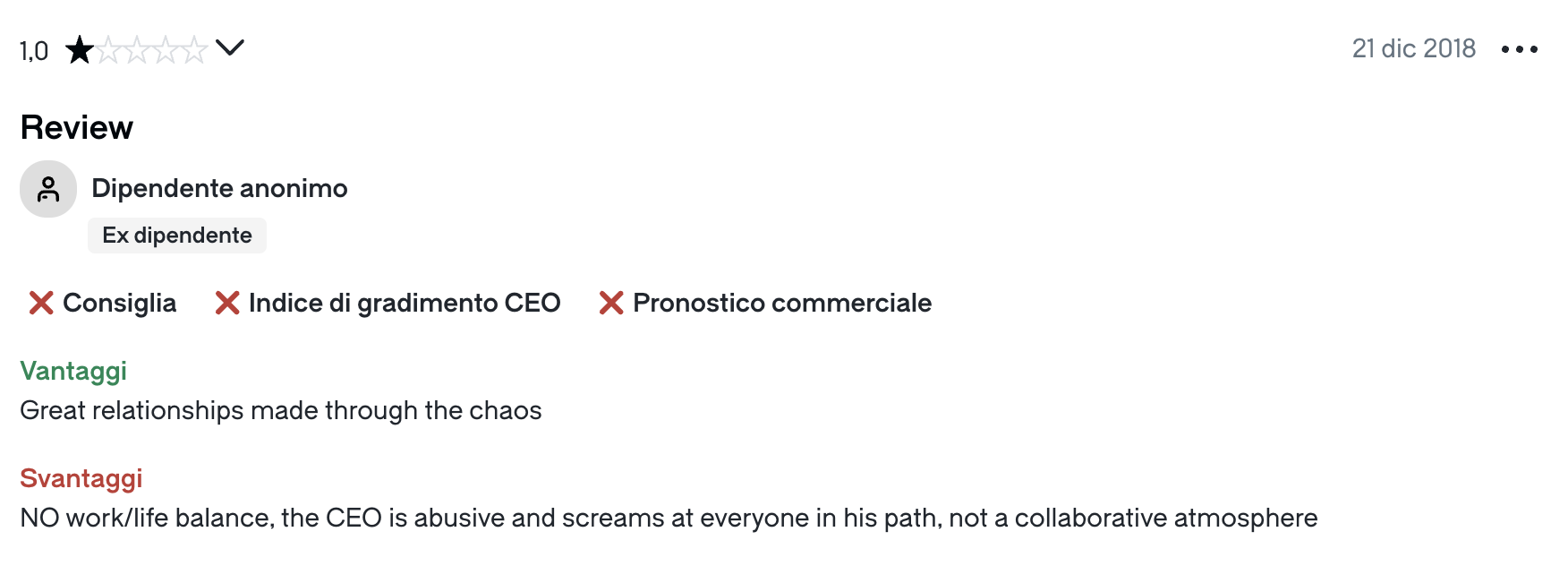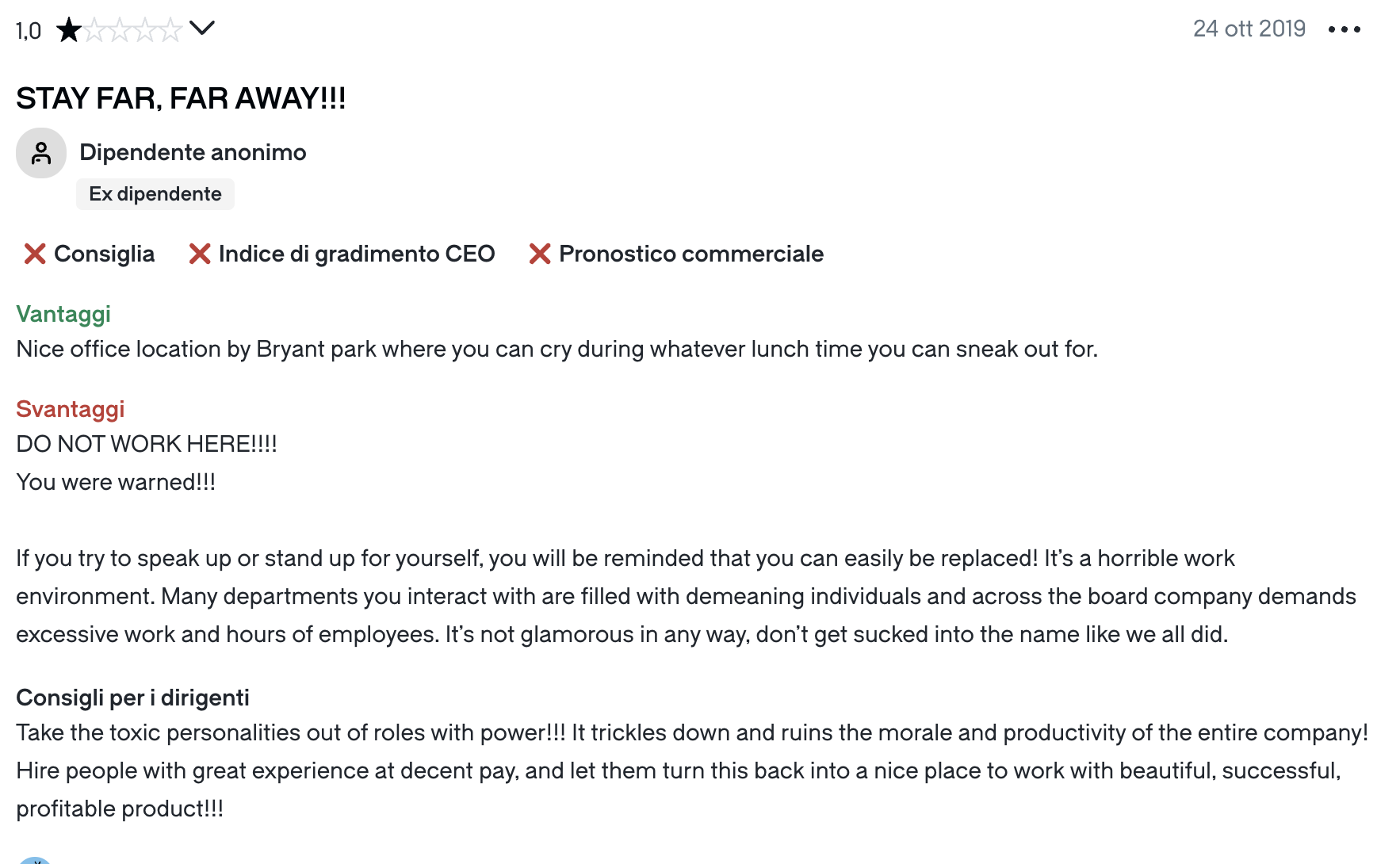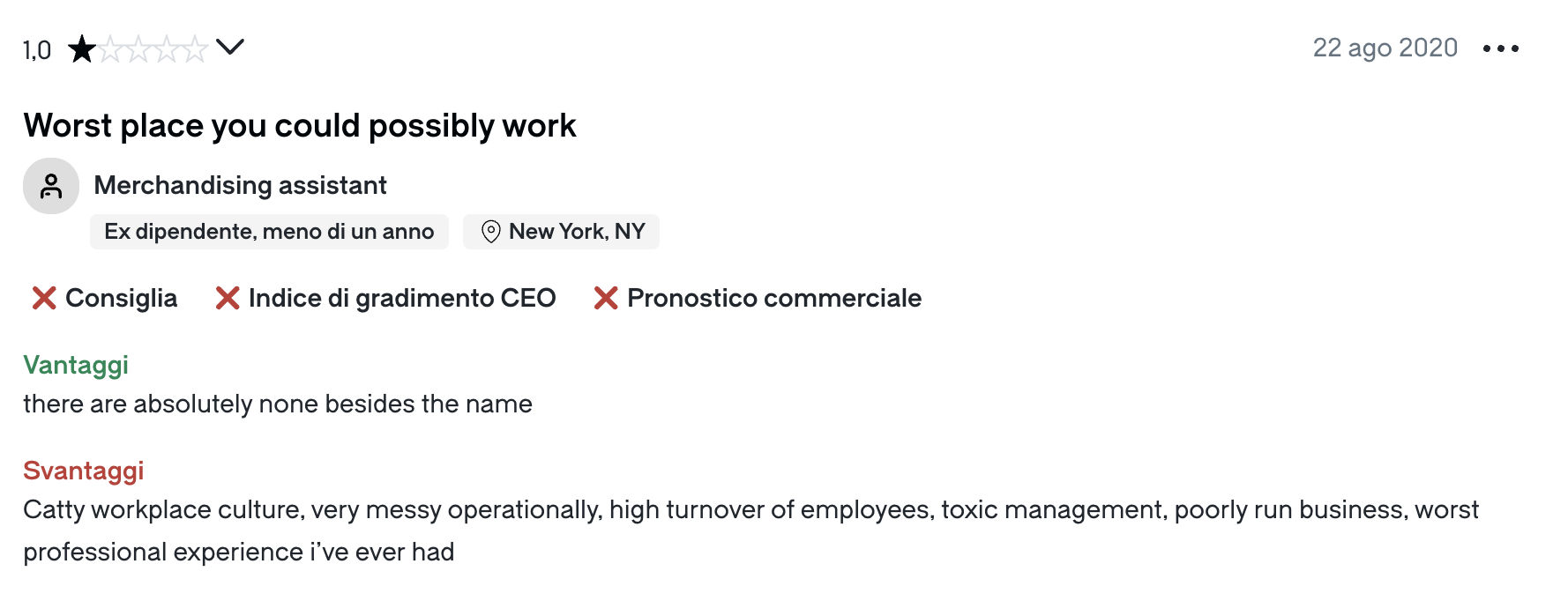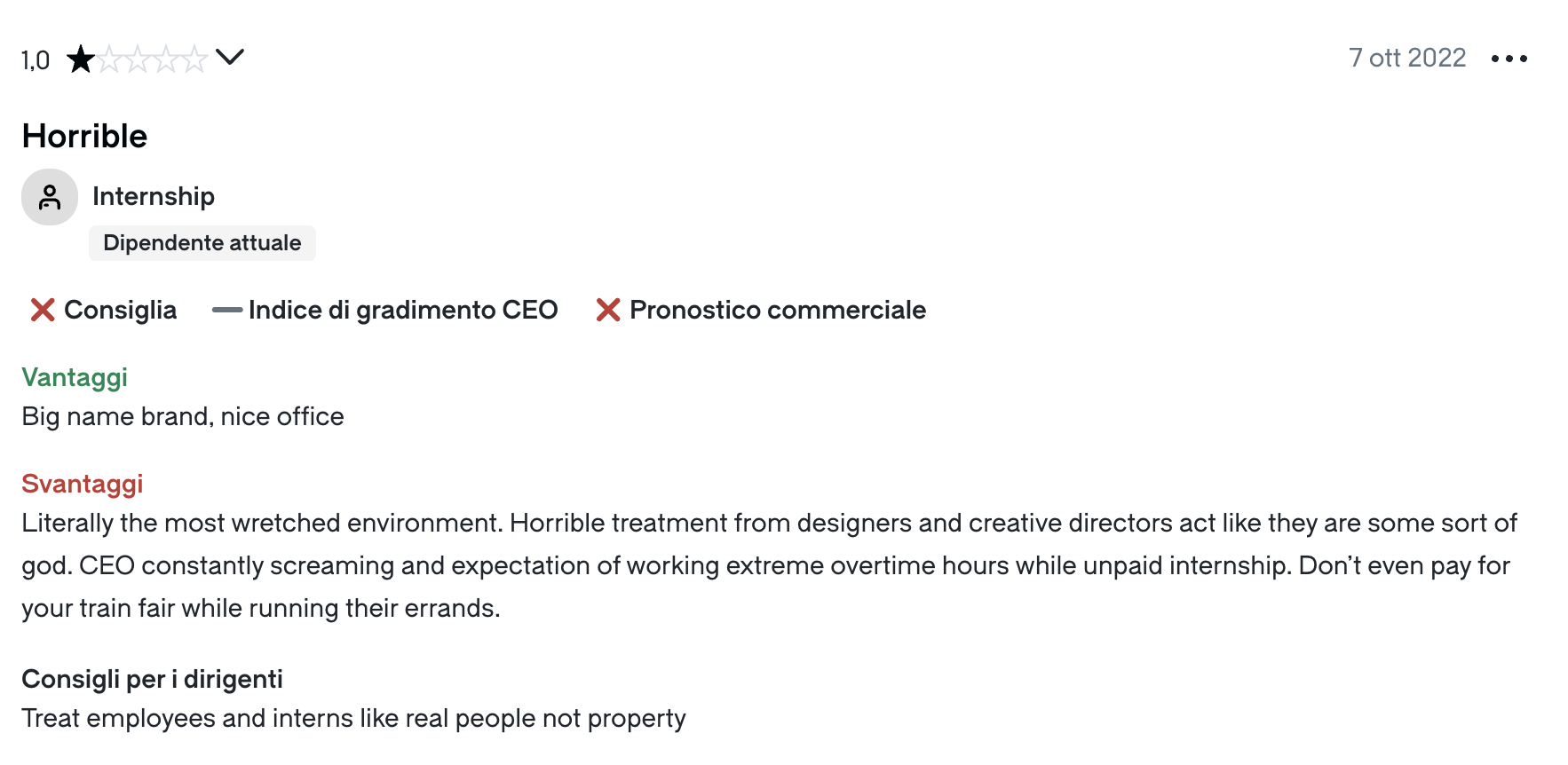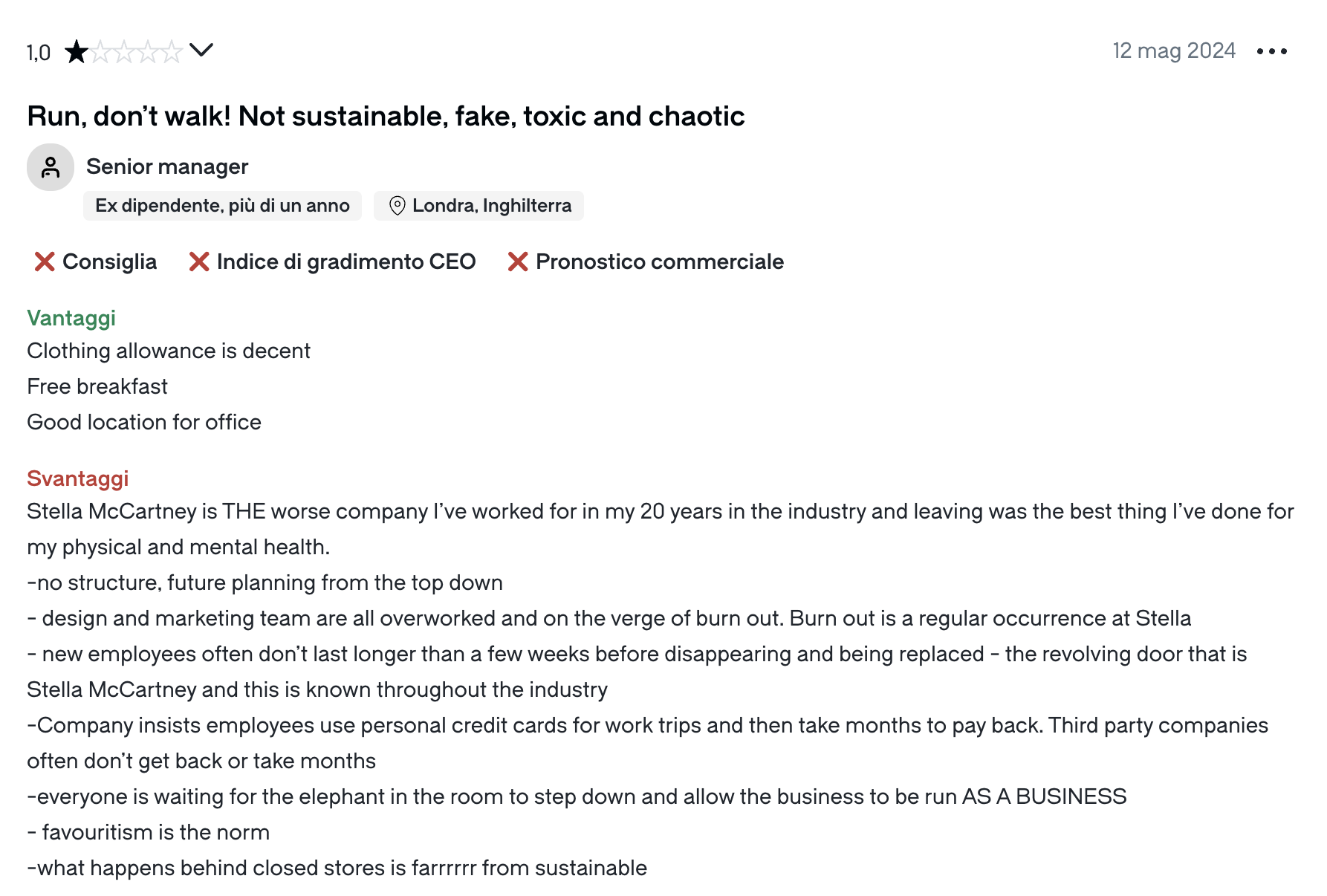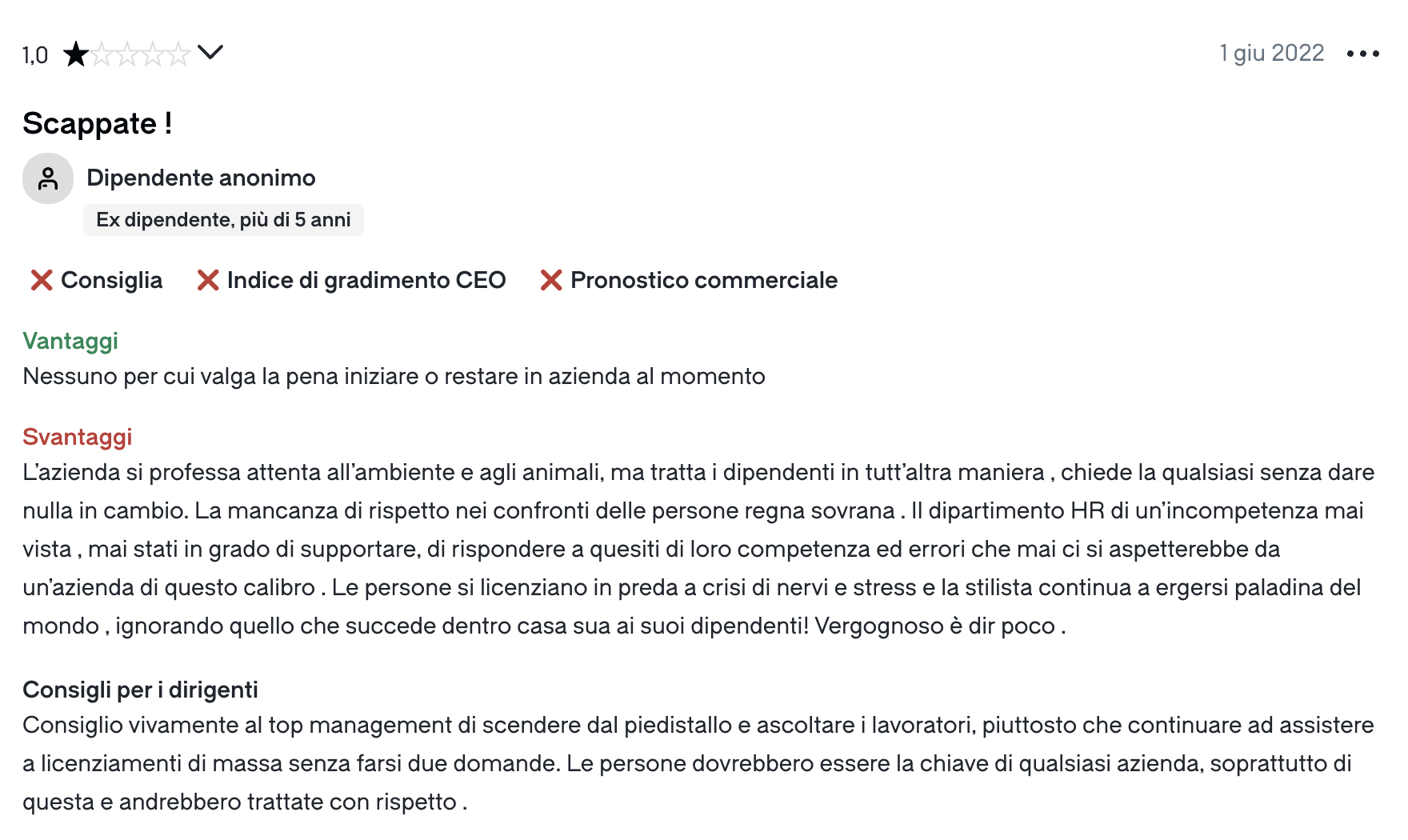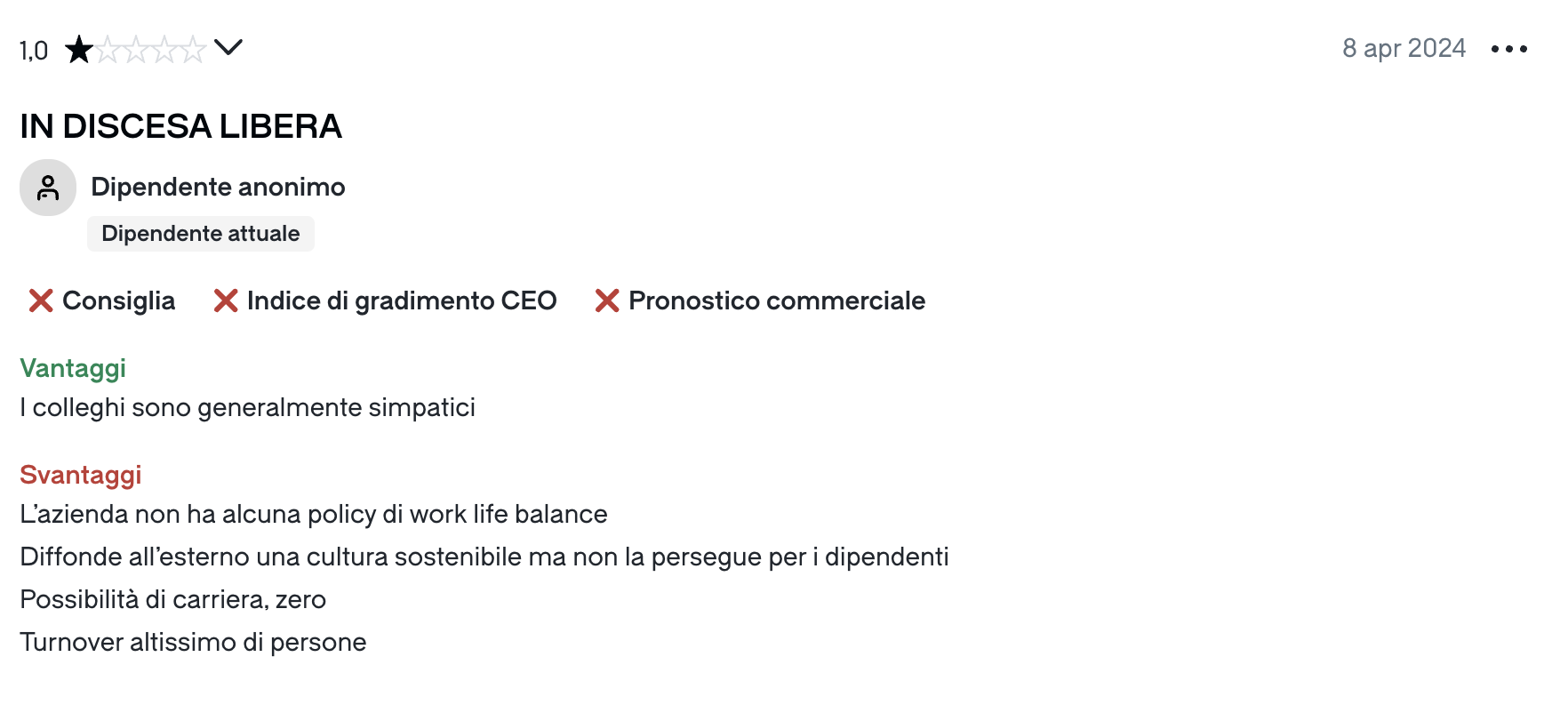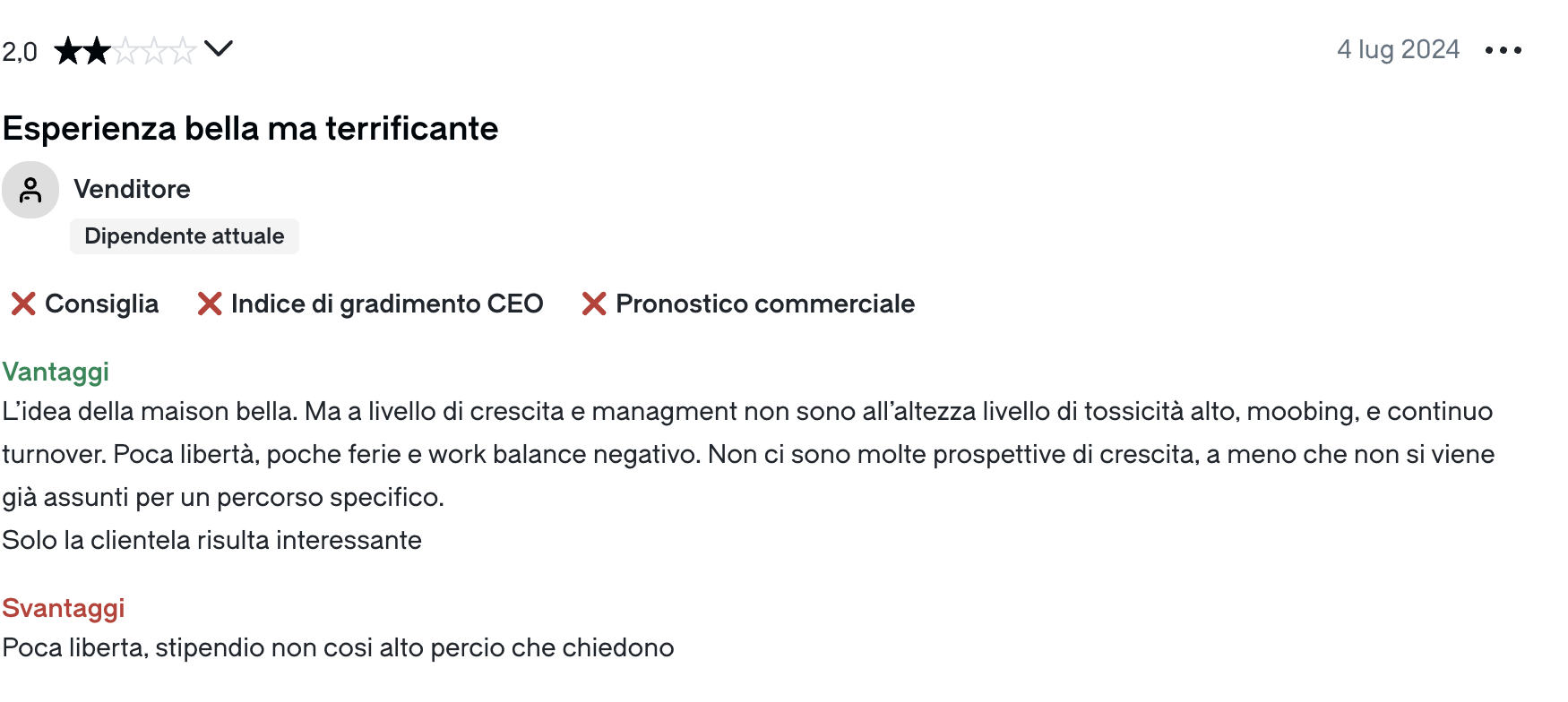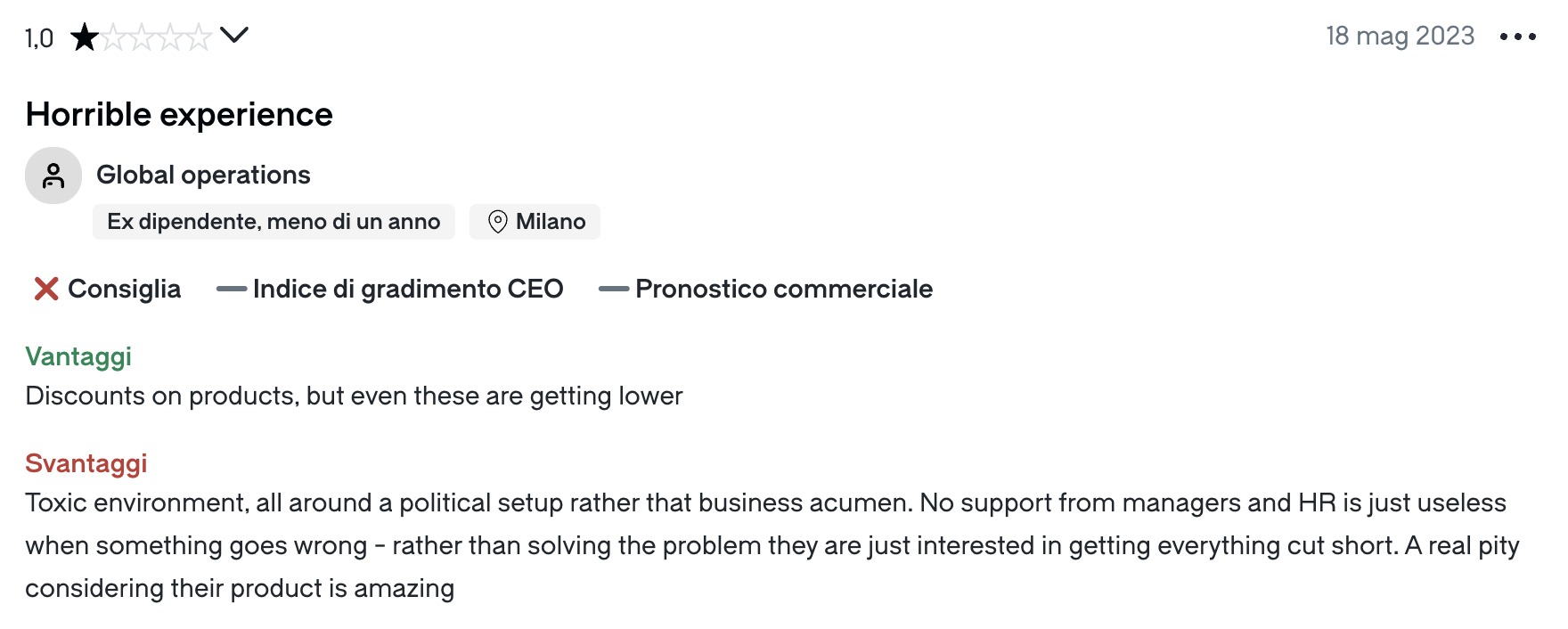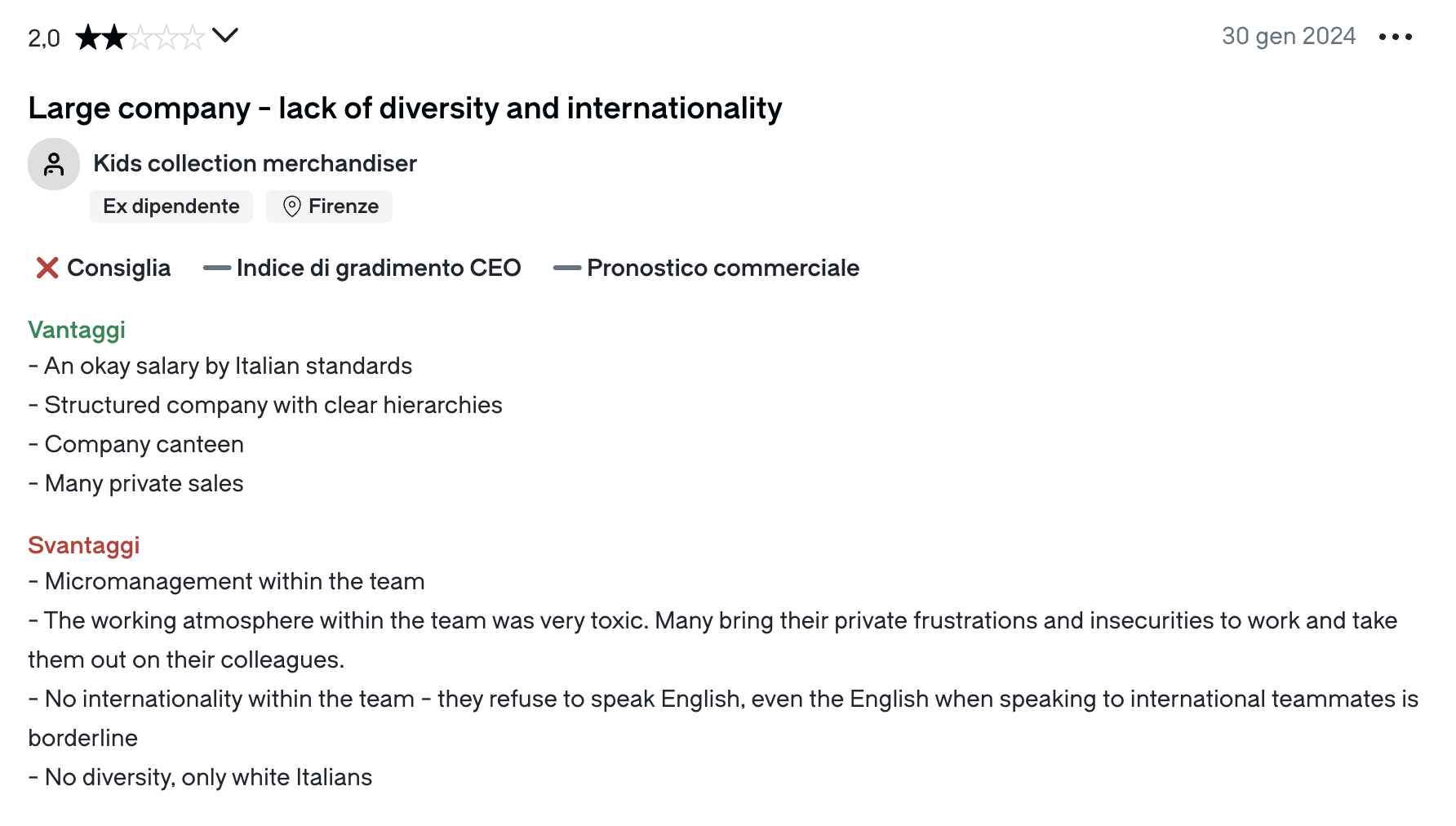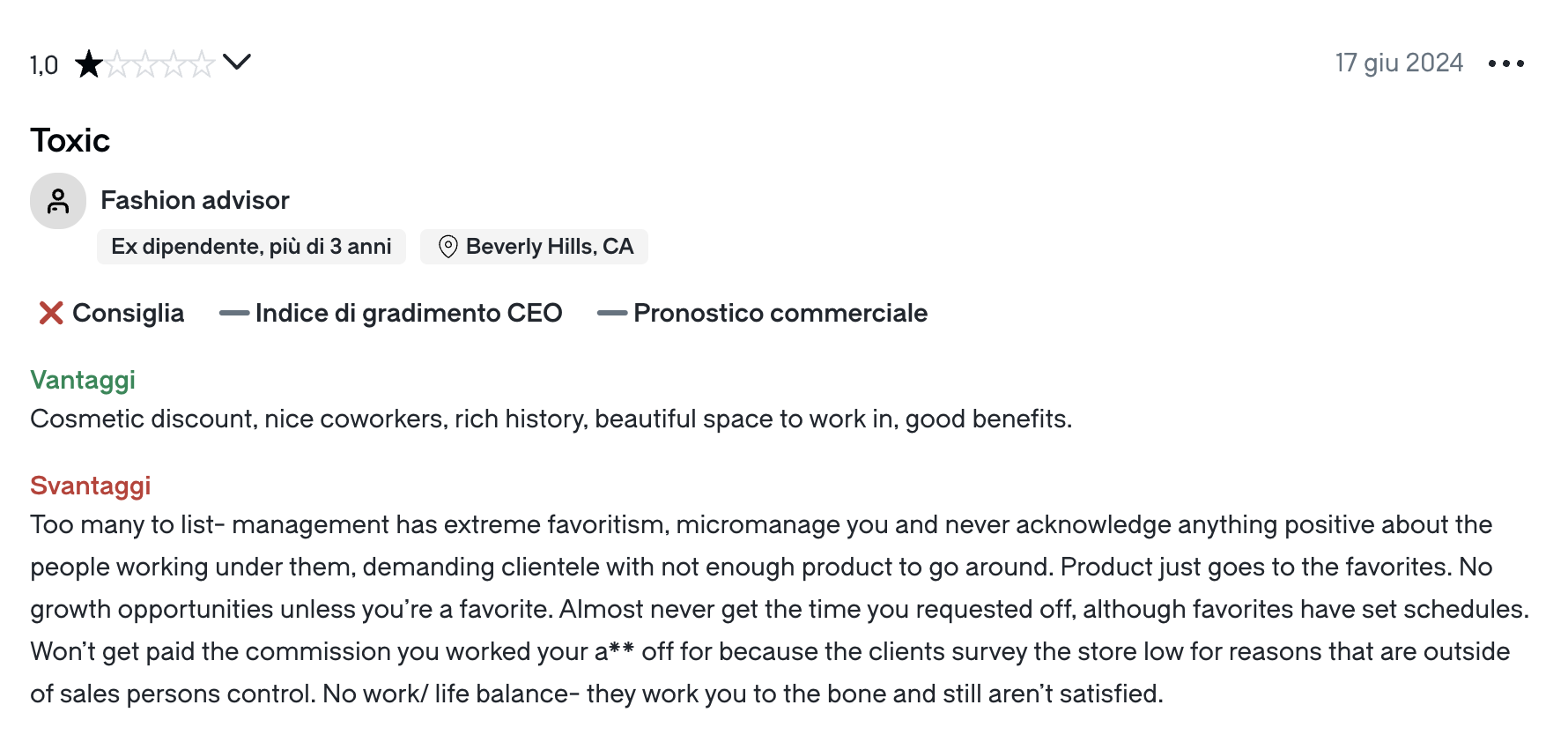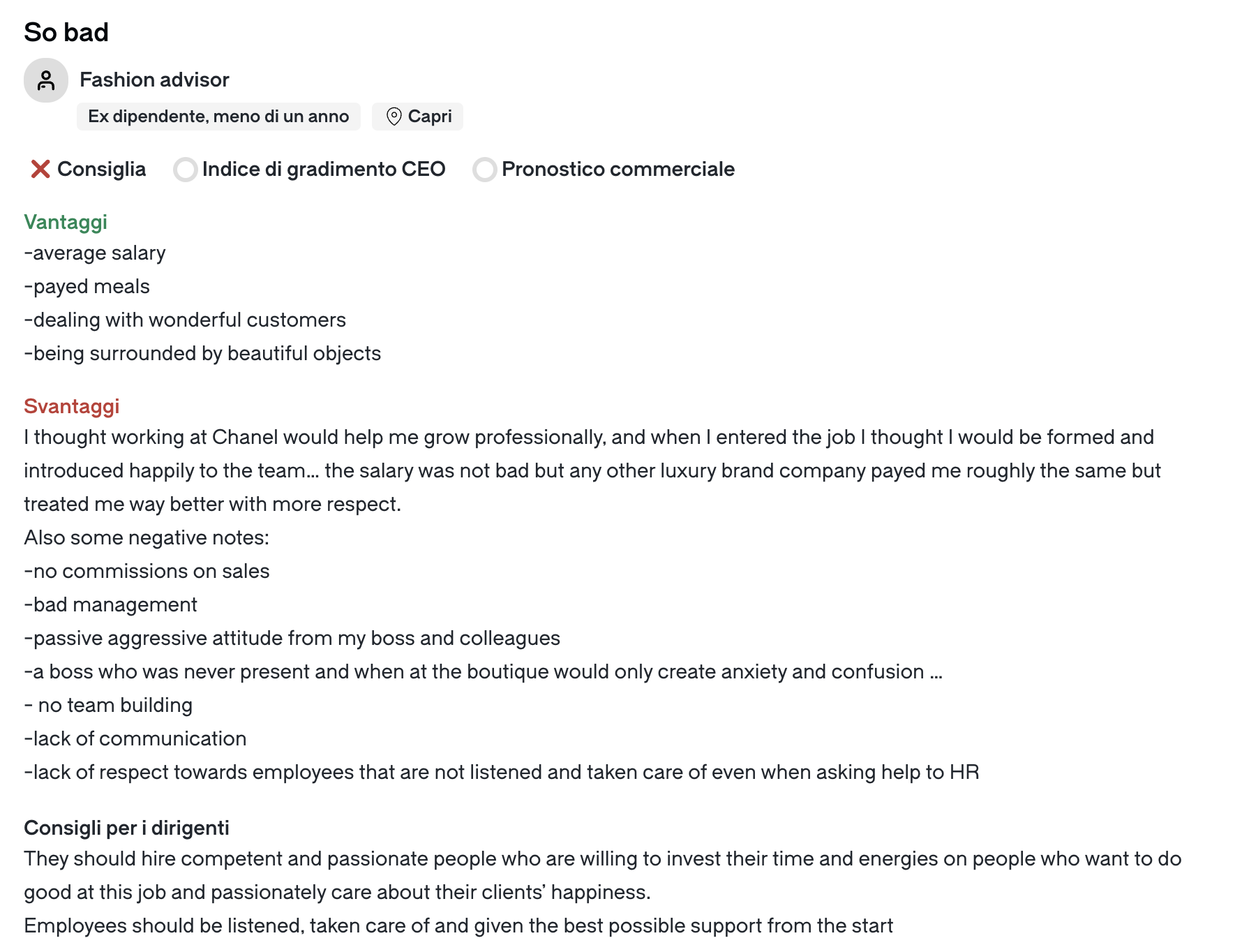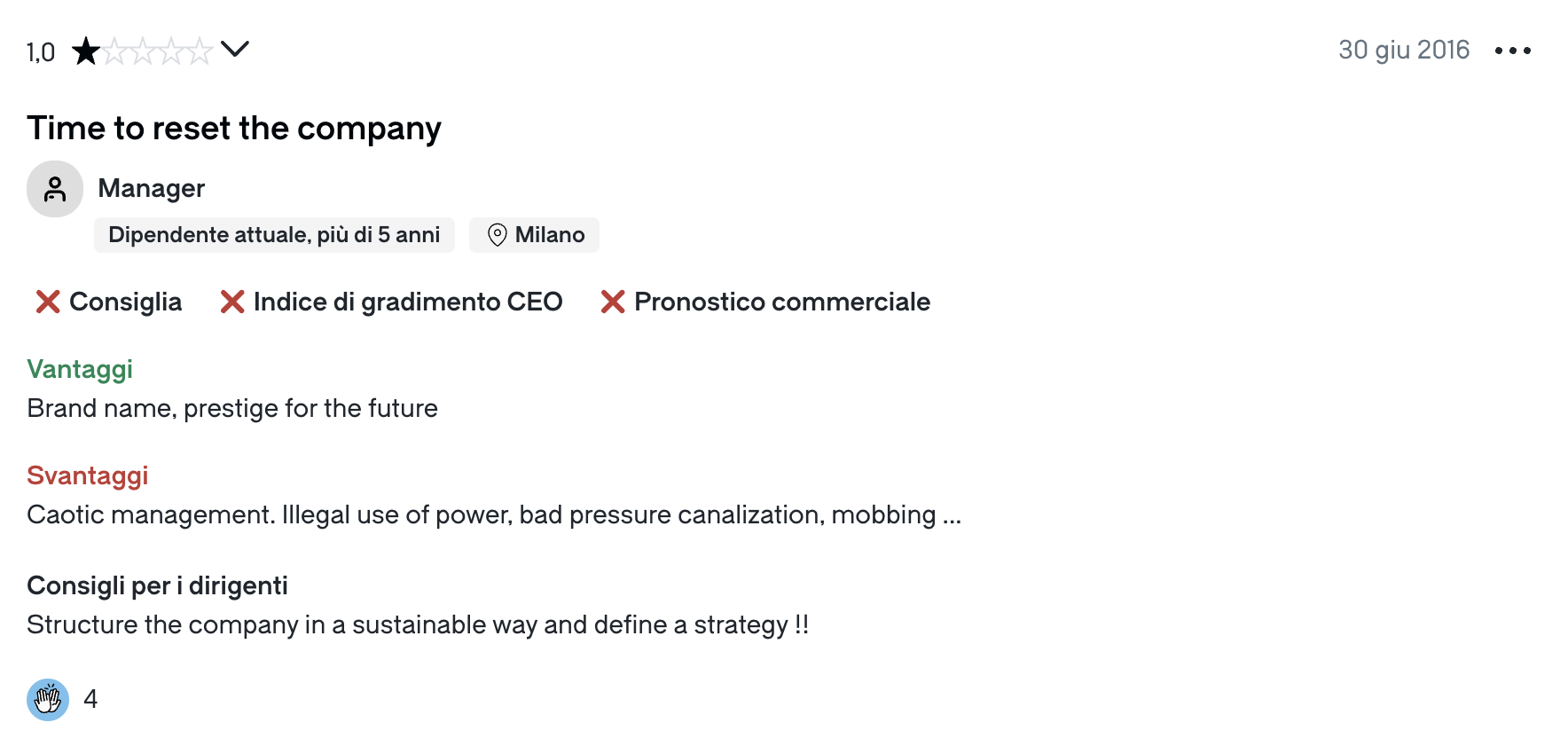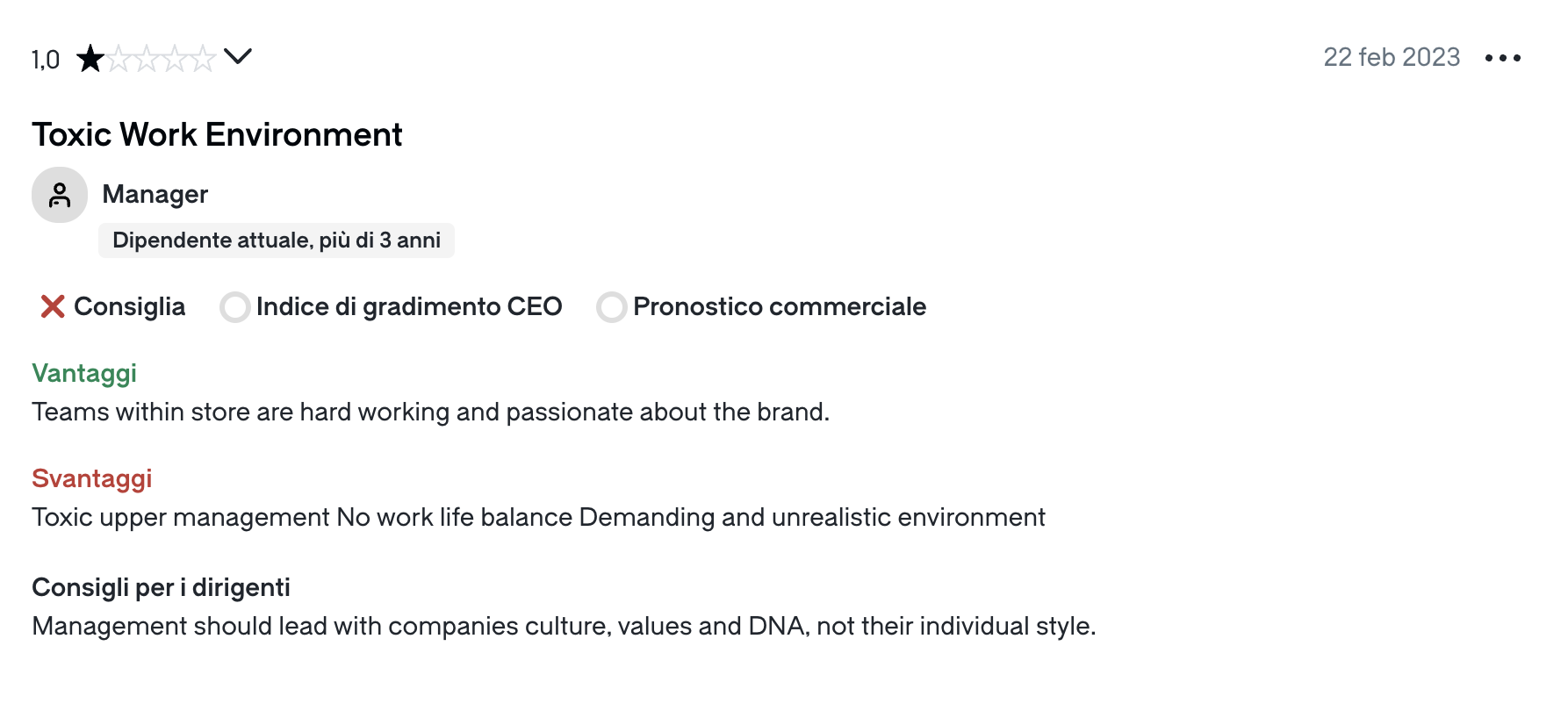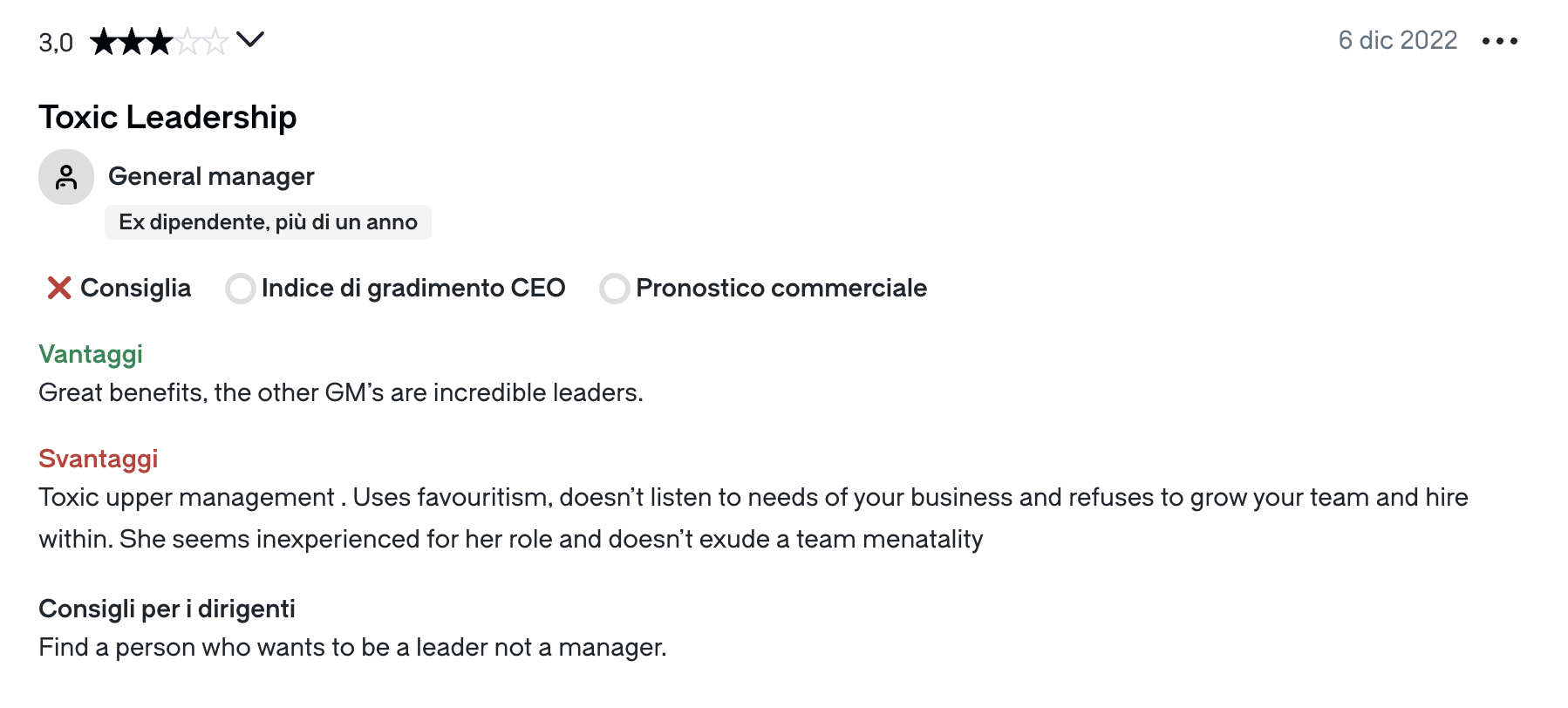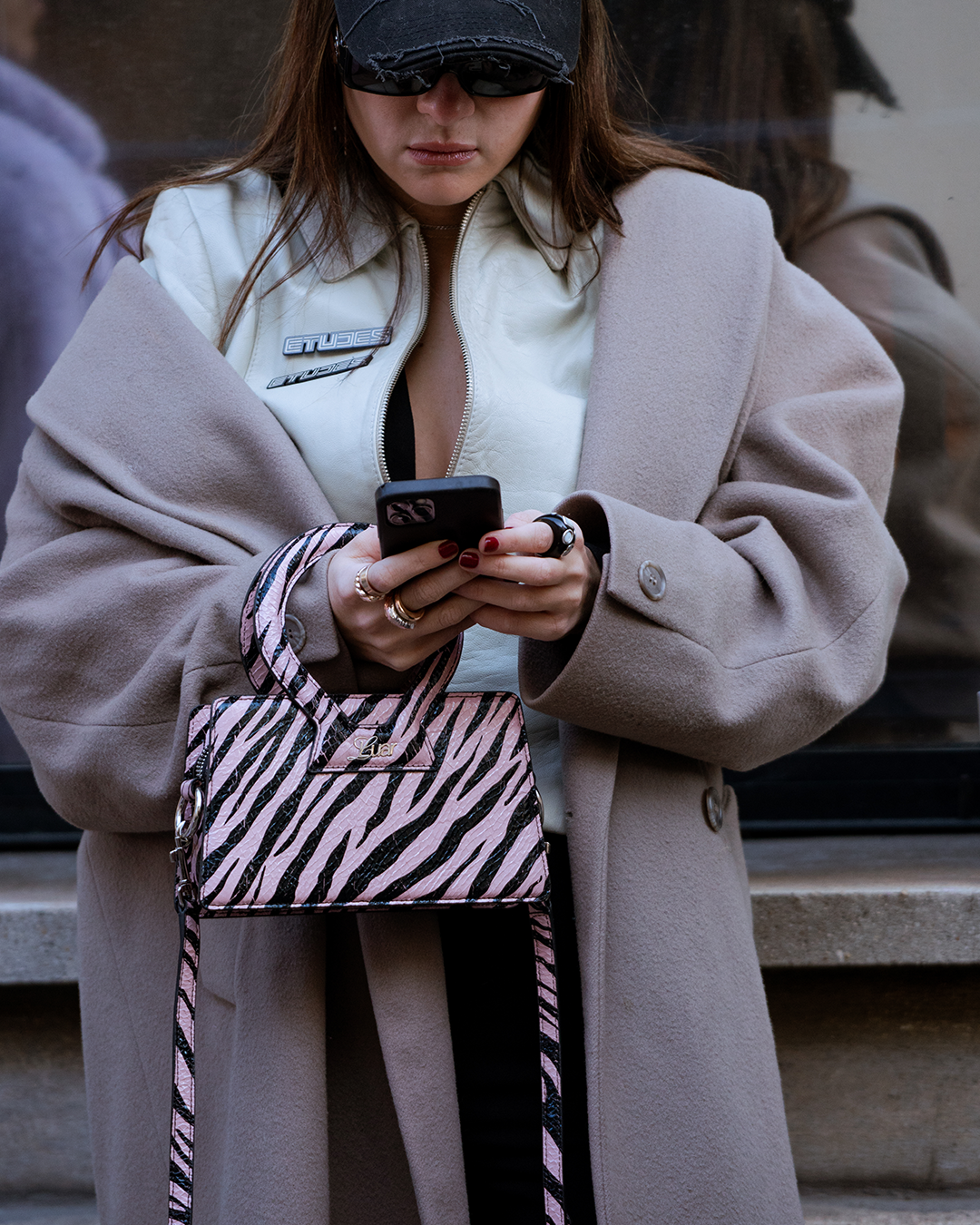
What is Glassdoor and why is it frightening for the fashion world? A window on the working condition of fashion luxury brands

“Pro: Only the Nespresso coffee machine, Con: Where to start? Pretty much everything.” Founded in 2008, Glassdoor is an online platform that allows users to review their workplace, past or present. The idea behind the site was born from a mistake by founder Rich Barton, an internet magnate, who, during his tenure as CEO of Zillow (the American real estate platform), accidentally printed employee annual reviews in the office, complete with notes on whether or not to grant raises to all company personnel. Years later, discussing it with friends Tim Besse and Robert Hohman (current CEO), the eureka moment happened. In a world full of platforms like LinkedIn, Indeed, and others, there was a lack of a platform that flipped the narrative, putting the worker at the center. Glassdoor is not an emotional dump for workplace frustrations but an ally for job seekers looking for impartial opinions on their potential workplace. Although the focus has shifted from just reviews over time, Glassdoor now focuses on creating company profiles, considering various metrics ranging from average salaries to benefits and recruitment processes. In recent weeks, Glassdoor made headlines for being at the center of allegations of abuses against English designer Phoebe Philo and her company. This raised another question: how do fashion brands treat their employees?
@elileviofficial if only i checked @glassdoor first #nyc #marketingscam #joblife #jobinterview #linkedintips I want to buy a gun - Teagan
Glassdoor's updates, particularly the latest one, have made the platform increasingly reliable, especially thanks to the authenticity of the reviews. It is not possible to post a review of a company without first verifying that the person has worked there. What document is required by the platform for this verification? A payslip or a detailed explanation of compensation, including benefits, vacation days, and other relevant information. In the fashion world, after the accusations against Phoebe Philo and many others before her, it has almost become second nature to check how luxury brands perform on Glassdoor before applying. The former creative director of Celine’s brand has an average of 1.3 stars, while most fashion houses have around 3.5 stars. Among the brands with the highest ratings are Chanel, Hermès, and Alexander McQueen, the latter with the best score of 4.2 stars. Meanwhile, among the brands with the lowest ratings are Stella McCartney and Oscar De La Renta, both under three stars. Most negative reviews for these brands concern long and exhausting work hours and a toxic office environment.
As for the major groups, both LVMH and Kering maintain relatively high ratings, with 3.9 and 3.7 stars respectively, accompanied by many reviews expressing great respect for the workplace. However, some discrepancies emerge within the Prada Group: while Miu Miu struggles to surpass 3 stars, with numerous criticisms directed at the management, Prada aligns with the average of luxury brands, earning 3.5 stars. Nevertheless, no brand is immune to the many negative reviews reporting hectic work hours, an almost nonexistent work-life balance, and, in some cases, verbal abuse from the company's leadership.
I have my exit interview today and I will tell ALL. After that I’m going to Glassdoor to tell the rest
— Oshun (@Tomitomms) May 25, 2022
Like all review platforms, Glassdoor’s primary goal has always been to rebalance the power dynamics within workplaces, offering employees a space where they can both praise the company they work for, encourage its growth, and report its problems and poor management, potentially damaging the brand’s reputation. Some of the largest multinationals, like Nike, Facebook, and Electronic Arts, have reported that during job interviews, candidates themselves bring up negative Glassdoor reviews to HR, asking for explanations regarding the accusations. The new generations are no longer willing to tolerate a work environment where abuse and toxicity are accepted as part of the “learning curve” or necessary for professional growth. In recent months, we have witnessed a wave of accusations of human rights violations and labor law breaches against fashion giants such as Dior and Giorgio Armani, thus dismantling the “veil of silence” that has protected the fashion industry for decades. This phenomenon has highlighted a growing awareness among workers, who no longer fear publicly denouncing injustices and inappropriate behavior. Companies, on the other hand, are now forced to contend with increasing transparency, making it difficult to hide improper practices behind their glossy image.










































